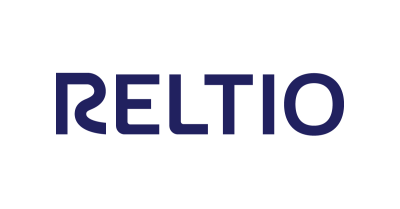Agenda Day 1
CDO BFSI Agenda Day 1
8:00 am - 8:30 am
EVENT REGISTRATION & COFFEE
8:30 am - 8:35 am
IQPC WELCOME SPEECH – Konstantinos-Konor Lambrinidis, Conference Producer, IQPC
8:35 am - 8:45 am
OPENING ADDRESS FROM THE CHAIR
Brian Jones -
Founder & Director,
AtlanticCedar
8:45 am - 8:50 am
LIVE POLLS
8:50 am - 9:35 am
PANEL DISCUSSION: STOP BAD DATA AT ITS SOURCE AND BUILD ENTERPRISE-GRADE DATA QUALITY FROM THE GROUND UP
Lashan Bartholomeuz -
Head of Data Exchange & Control - Corporate Bank.,
Deutsche Bank
Simon Lewis - Jones - Chief Data Officer - Risk & Compliance, Standard Chartered
Brian Jones - Founder & Director, AtlanticCedar
Poor upstream quality sabotages AI efforts, compliance, and customer experience; reactive fixes simply inflate cost and time resources. Equally, bad quality downstream flow hinders data team efforts by forcing endless cleaning loops, ad-hoc pipeline patches, and manual fixes every time a report or model misfires. Before organisations can even explore safe and efficient use of AI, data architecture and quality need to get in check. Proactive, contract-level standards are essential, and only CDOs that get their data in line will unlock true value.
- Learn how to embed uniform data-quality service level agreements into every vendor and internal business unit contract.
- Use critical-data-element catalogues to assign clear ownership and accountability.
- Discover how to automate quality tests, replace manual sampling, and streamline quality.
9:35 am - 10:05 am
FIRESIDE CHAT | BUILDING AN ENTERPRISE DATA COMMERCIAL STRATEGY: THE NEXT FRONTIER FOR YOUR DATA MESH & DATA PRODUCT STRATEGY
Peter Jackson -
Global Head of Data Office,
Schroders
Ben Kosky - Regional Director - Financial Services, Snowflake
10:10 am - 10:40 am ONE-TO-ONE BUSINESS MEETINGS & NETWORKING
10:45 am - 11:20 am ONE-TO-ONE BUSINESS MEETINGS & NETWORKING
11:25 am - 11:55 am ONE-TO-ONE BUSINESS MEETINGS & NETWORKING
10:10 am - 10:40 am THINK TANK: GOVERNANCE - FROM BURDEN TO SUPERPOWER
Matt Curtis - Head of Data, esynergyGovernance is too often seen as a burden, something that slows delivery rather than strengthens it. But it doesn’t have to be that way. In this interactive session, we’ll explore how to turn governance into a genuine business enabler: a capability that drives confidence, clarity and control. Join Matt Curtis, Head of Data, esynergy, to discuss practical ways to make governance something people want to do - because it makes sense and adds value.
10:45 am - 11:15 am ROUNDTABLE: AI CLAIMS ROUTER: HOW YOUR PEERS ARE SLASHING CLAIM TIMES AND IMPROVING NPS
Tris Burns - Data Leadership Coach, trisjburns.comClaims still often bounce between handlers worldwide, affecting pricing, efficiency, and customer satisfaction. AI is however transforming the claim lifecycle, drastically reducing the time from FNOL to payout, decreasing manual processing, and boosting policyholder loyalty. Data leaders now have the opportunity to rebrand insurance operations as a lean claim handling machine that optimizes productivity, guaranteeing compliance and safeguarding against fraud.
- Share NLP training tips on how to leverage unstructured PDFs and email attachments classify claim type, jurisdiction and urgency at intake.
- Discuss how audit-grade lineage keeps PRA/FCA auditors happy.
- Communicate the NPS uplift opportunities that shortening claim lifecycles is already achieving.
11:20 am - 11:50 am THINK TANK: DEVELOP REUSABLE DATASETS AND SHARE BEST PRACTICES TO SCALE ENTERPRISE AI
Jez Davies - Global Head of Data Products, Northern Trust Asset ServicingDuplicate datasets, bespoke feature code and inconsistent definitions create compliance friction, prolong processes, and inflate infrastructure cost. Scaling AI enterprise-wide requires certified golden data copies of critical data and sharable ML templates for the entire organisation.
- How are your peers keeping downstream app in sync?
- What are the best practices to guarantee feature reusability?
- Explore rules that make reusable data sharing quick, not bureaucratic.
11:55 am - 12:25 pm
FIRESIDE CHAT | GETTING YOUR DUCKS IN A ROW: THE REAL STEPS TO PRODUCTION READY AI
Roxanne Howdle-Rowe -
Managing Director, Data & Analytics,
British Business Bank
Brian Jones - Founder & Director, AtlanticCedar
Sampling-based checks still miss opaque anomalies while analysts reconcile spreadsheets to appease regulators. As data volumes increase and breach exposure intensifies, CDOs are being pushed to swap periodic evidencing for always-on, AI-driven assurance. Continuous monitoring promises earlier breach detection, leaner control and immutable audit trails - provided models are trained on quality data and wrapped in transparent governance. With DORA, the EU AI Act, BCBS 239, GDPR, SS1/24 and other strict rules in effect, navigating innovation without setting off compliance tripwires has never been harder. The CDOs that will navigate this with emerging models are the ones that will become compliance champions.
- Examine how to benchmark your anomaly-detection models on control logs to flag compliance breaches proactively.
- Explore how the shift from periodic sampling to real-time attestation is the way forward.
- Learn how to ensure alerts are addressed in real time.
12:30 pm - 1:00 pm PROBLEM SOLVING CLINIC
Brian Jones - Founder & Director, AtlanticCedarGeneric Q&As never kill a live blocker. Submit one thorny issue pre-arrival – either through the email that will be sent to you prior to the conference, or during our question collection during the pre-event pub quiz. In five-minute rotations, peers dissect your problem, share fixes and volunteer follow-up contacts. You leave with an action plan and the contacts to get you through it
1:00 pm - 2:00 pm
LUNCH
2:05 pm - 2:10 pm
LIVE POLLS
2:05 pm - 2:35 pm
PRESENTATION | CURIOSITY-DRIVEN ANALYTICS: THE JOURNEY FROM DASHBOARDS TO AGENTIC BI
Marcos Monteiro -
CEO & Co-Founder,
Veezoo
2:35 pm - 3:05 pm
PRESENTATION | ENABLING RESPONSIBLE INNOVATION: HOW DATA CAPABILITIES AT THE FCA ARE SUPPORTING GROWTH, SAFETY, AND DIGITAL MATURITY ACROSS UK FINANCIAL SERVICES
Lauren Dixon -
Chief Data Officer,
FCA (Financial Conduct Authority)
In this session, Lauren Dixon, Chief Data Officer at the Financial Conduct Authority, will explore how the FCA is using Data to protect consumers, enhancing market integrity, and promoting effective competition.
· Transforming with purpose – how the FCA is developing modern data and supervisory tools to help firms grow with confidence, reduce regulatory friction, and navigate emerging risks at scale.
· Driving safe experimentation – the role of TechSprints, digital sandboxes, and early engagement in enabling new ideas to grow safely and responsibly.
· Upskilling for the future – why digital literacy, especially for women and underrepresented groups, is vital for building an AI-ready, resilient workforce.
· Fostering inclusive partnerships – how the FCA collaborates with industry, academia, and international peers to scale trust, innovation, and opportunity across the ecosystem.
3:10 pm - 3:40 pm ONE-TO-ONE BUSINESS MEETINGS & NETWORKING
3:45 pm - 4:15 pm ONE-TO-ONE BUSINESS MEETINGS & NETWORKING
4:20 pm - 4:50 pm ONE-TO-ONE BUSINESS MEETINGS & NETWORKING
3:10 pm - 3:40 pm COFFEE & NETWORKING BREAK
3:45 pm - 4:15 pm ACHIEVING REGULATORY COMPLIANCE WITH TRUSTED DATA IN THE CLOUD
Steve Holyer - Data Platform Leader, Data Governance and Quality, EMEA North, InformaticaDiscover how organizations can navigate today’s compliance requirements while strengthening their data and AI governance.
- Learn about global developments in regulatory legislation and potential impact on organizations’ data management.
- Hear about the latest trends, market insights and state of AI governance and what this means for regulatory compliance.
- Understand the importance of trusted data for regulatory compliance to drive business value
Explore how today’s AI-powered solutions, such as Informatica’s Intelligent Data Management Cloud (IDMC), are enabling data leaders to build confidence in their regulatory compliance strategy.
4:20 pm - 4:50 pm COFFEE & NETWORKING BREAK
4:55 pm - 5:25 pm
THE NEW RULES OF DATA INTELLIGENCE IN THE AGE OF OMNICHANNEL CUSTOMER EXPERIENCE
Rob Algar -
Solution Consultant,
Reltio
The old rules of data no longer apply. In the Age of Intelligence, BFSI organizations must go beyond siloed systems and fragmented insights to deliver truly personalized and trusted, omnichannel customer experiences. Success now depends on building a real-time, connected view of every customer — a dynamic Customer 360 — fueled by high-quality, unified data that drives retention, loyalty, and growth.
In this session, Reltio will outline the new rules of data that financial services companies must adopt to compete and win in the Age of Intelligence. Learn how data leaders — CAIOs, CIOs, and IT executives — can modernize their enterprise data foundation to ensure every customer initiative is powered by complete, consistent, and trusted information.
Attend this session to:
- Discover how a real-time Customer 360 and trusted data foundation improve customer retention and lifetime value.
- Learn how an agentic data fabric, built on unified and high-quality data, accelerates transformation across your enterprise.
- Gain practical, actionable strategies for deploying omnichannel, customer 360 experiences across financial services, ensuring your organization stays ahead of the curve.
5:25 pm - 6:10 pm
PANEL DISCUSSION | PROFITABLE, PRIVATE, AND COMPLIANT: A PLAYBOOK FOR DATA MONETISATION THAT DOESN'T BREACH TRUST
Ime Akpan -
Head of Data Engineering,
Vanguard
David Bruce - Chief Data Officer, Financial Ombudsman Service
Brian Jones - Founder & Director, AtlanticCedar
Open Banking APIs and data marketplaces promise new revenue streams which boards are more than keen to explore – but few have managed to monetise data assets to their full extent just yet. Poor data quality, uncertainty over which data can be repackaged into profitable products, privacy concerns, and fragmented data architecture are common inhibitors. Adding to these blockers, Consumer Duty and GDPR slap fines on any hint of misuse, further paralyzing CDOs who would rather play it safe. Pilot revenues are often menial as legal and risk teams veto bold moves. CDOs must now prove a model that grows profit share without triggering customer backlash or regulatory scrutiny.
- Explore commercial frameworks that share upside with partners, protect from liability, and align with your consumer duty and regulatory commitments.
- Learn how to develop the infrastructure for secure data sharing, advanced analytics, and product development and capitalize on underutilized data assets.
- Create convincing narratives that persuade customers to opt in rather than out.































